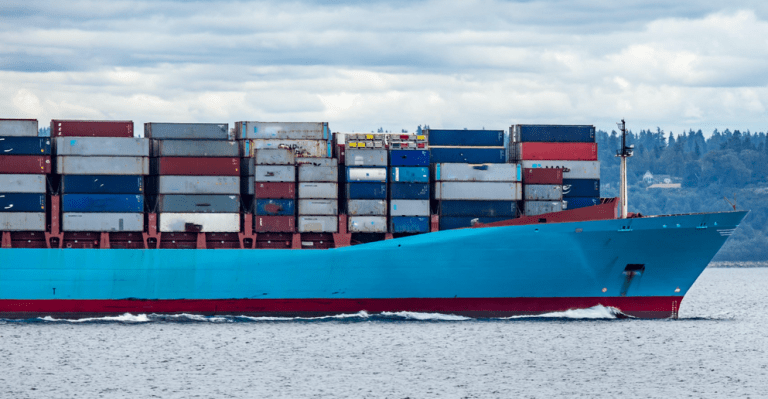7 Ways to Update Your Supply Chain Strategy for 2022

The onset of the COVID-19 pandemic has changed the logistical landscape forever. There have been significant channel shifts due to renewed consumer behavior, the speed of orders, and delivery standard expectations. Amidst all this pandemonium, supply chains had to evolve years in a span of months just to keep up with this significant paradigm shift.
Companies have moved away from low-cost supply chains and towards a much more resilient and agile framework. 87 percent of supply chain leaders are looking to invest in resilience in the coming years. As a result, the adaptation of next-gen transportation and logistics strategy solutions has made supply chains faster, smarter, and user-centric. Moreover, the logistics industry is evolving at an alarming rate and is said to reach a valuation of $12,256 billion by 2022.
Since adroit logistics are reshaping the whole supply chain, what should you look forward to in 2022 and beyond? Read on to know more about seven different ways you can make your supply chain strategy even better!
Importance & benefits of a good supply chain strategy
In light of this new normal brought by the pandemic, it is of the essence that all companies, no matter the size, adapt a supply chain component. But why? Well, let’s delve into that for a bit.
Keeps costs and service quality in balance
Customer satisfaction is key to the success of any business. But that might mean having goods in stock at all times. This might lead to overproduction and wastage of resources. With a good supply chain management (SCM) strategy in place, this can be avoided. The company shall save money and keep customers happy at the same time.
Higher efficiency rate
Data-driven SCM provides real-time data on the availability of raw materials and manufacturing delays. Hence, companies implement a ‘plan B’ instead of meeting these hurdles with empty hands. Out-of-stock inventory and late shipments won’t be an issue anymore.
Encourages business development
With an effective data-driven SCM strategy in place, you can analyze your past dealings with vendors. You can compare prices, quality of services, raw materials, etc., and realize improvement areas. Work on them and achieve your business goals efficiently.
7 ways to better your supply chain strategy for 2022
Higher visibility
Increased visibility into your supply chain’s transportation spend is a must. By doing so, you can improve on your weaknesses, control costs, and make effective, impactful data-driven decisions. In fact, 50 percent of global product-centric companies will have implemented real-time transportation visibility platforms. But why so?
Well, the answer lies in two parts. Firstly, they allow customers to track their orders in real-time. This meets the renewed customer expectations and makes the work of the customer support team a little easier. Secondly, the customer support team can deliver invaluable insights into your transportation costs and overall performance.
Total visibility into your transportation spend is a gateway to optimize carrier selection, carrier rates, contract management, etc. Not only that, but you now have a stream of high-quality data that can help improve your business intelligence and make smarter data-driven decisions to cut costs further.
Increased resiliency
A resilient supply chain can be the only thing standing between a company’s success or failure. A bold claim? For sure. But is it wrong? Absolutely not. An effective, agile, and resilient supply chain management strategy can be a massive sales enabler and a significant driver to the company’s profit margin and growth opportunities.
You need to optimize your transportation spending to understand where you are directing your money and root out all the unnecessary expenses. By controlling the costs within the supply chain, you can cut many costs and direct that money towards optimizing the areas that require improvement. Provided your supply chain management strategy is spot-on, you can make data-driven and impactful decisions and secure your place at the top of your industry.
Optimized logistical networks
The supply chain industry has recently seen a shift to omnichannel. The logistical disruptions caused due to the ongoing pandemic have accelerated this process by a considerable extent. According to a report by Gartner, 76 percent of supply chain professionals claim to have experienced an increase in disruption events in the past three years.
72 percent of them also stated that the impact of these events has also increased. Hence, optimizing your logistical network for agility and resilience has become vital to maintain and multiply your customer base. Due to the ongoing pandemic, most customers have adapted to online shopping or buying online and picking up at stores (BOPUS).
Although in-store shopping hasn’t completely disappeared, this new normal demands you to constantly keep up with customer orders and restock retailer inventory. Companies seem to be juggling between global, regional, and local networks to enable quicker delivery times. Hence, 90 percent of US retailers and consumer goods companies plan to change and optimize their supply chain network to increase efficiency.
Better risk mitigation
Risk mitigation is essential to maintain your customer base and the integrity of your supply chain. This point can’t be stressed enough post the onset of the pandemic. Over 28 percent of companies experienced a stock shortage in the first few months of the pandemic. This can damage your brand identity and have a detrimental effect on your customer base and market share. On top of this, damages, delayed shipments, inadequate storage environments, etc., can worsen the situation.
You need to evaluate and identify the current risks to your company, prioritize them by probability and impact, and approach them accordingly. For example, optimizing and automating freight audits can act as a potent risk mitigator, as it eliminates errors, averts delays based on discrepancies, and streamlines operations.
Digital supply chain adoption
Supply chains have been very sluggish in adopting digital transformation. But the pandemic has been a wake-up call. With the digitization of almost everything in sight, supply chains need to undergo complete change management to stay afloat and keep up with the changing times.
But what is change management? Change management is a collective term for all structured processes and approaches used to prepare, support, and help organizations make a complete organizational change. Managers today need to understand its tenets and create a seamless digital transformation. This is extremely necessary as only 1 percent of world supply chain leaders have an extensive digital supply chain system in place.
With proper change management and digital supply chain tech adoption, this number is expected to shoot up to 23 percent by 2025. But people generally misinterpret the meaning of a digital supply chain. It is not just pushing spreadsheets onto a platform.
It refers to the development and implementation of advanced technologies cloud-based computing, IoT, blockchain, ML, AI, etc.) to drive improvements in traditional supply chains. Implementation of such technology will reduce errors, improve resource efficiency, and provide valuable insights.
Reliance on real-time data
Organizational silos can be detrimental to the smooth functioning of your company. Employees might become more insular and distrustful of other departments, making it challenging to work with other groups. Real-time data is the only way to break down these organizational silos as they offer complete transparency within your supply chain’s transportation spend.
According to a study conducted by Forbes, 84 percent of supply chain leaders claim that real-time data has helped them break down silos across the entire value chain. Real-time data can allow you to control cost centers, measure performance, address procedural gaps, improve decision making, and boost overall team and company performance.
With the pandemic still at large, the remote work culture makes maintaining transparency and leveraging accurate real-time data even more critical. This is to ensure that your transportations spend management keeps running smoothly and fruitfully.
Increased disruptions
The first nine months of 2020 experienced a massive 4200 disruptions to global supply chains, 14 percent higher than 2019. With disruptions set to keep increasing, supply chains must adapt and evolve to survive. Investing in supply chain resilience is an absolute must for 2022.
Also, climate change is making it more and more necessary to adopt digital solutions within supply chain management. According to a WHO, UNDP, and IPCC report, climate change has increased heat in the workplace and has reduced labor productivity by 20%. Hence, our reliance on software solutions has to proliferate to unburden human resources and prevent productivity loss.
Implementing an agile approach to supply chain transformation
An agile supply chain is a supply chain of the future. Supply chains must encompass the ability to achieve more in a shorter time, adopting new digital technologies. All end-to-end processes, such as planning, manufacturing, logistics, etc., must be backed by the latest technologies.
A more traditional supply chain will be rendered obsolete and must undergo complete change management to keep up with the rapid digitization of the industry. Process re-engineering (radical redesign of business processes) and adaptation of software solutions to cater to the company’s specific needs will pave the way for an impeccable supply chain management strategy.
Source : globaltrademag.com


